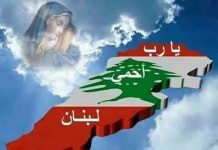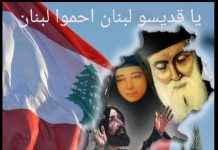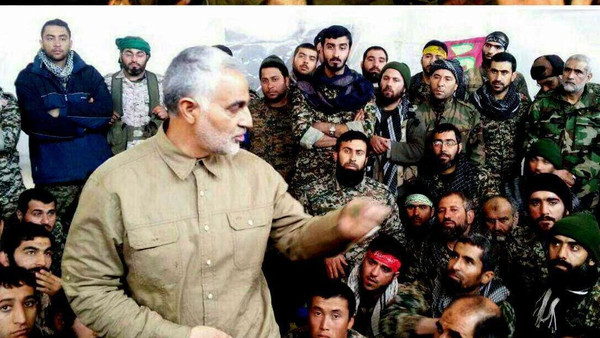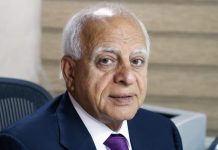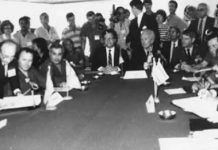Iran: The View from Mashhad
Abdulrahman Al-Rashed/Asharq Al Awsat/December 30/2017
Tehran protests in 2009 were an unexpected surprise not because the Iranian regime has no rivals in its circle but rather because protesters who threatened the regime come from within the core of its system. Tens of thousands, for days, and protests could only be halted by the use of weapons and bloodshed. Now, protests came out from various directions. They stem from cities such as Mashhad and continue spreading with slogans against Ali Khamenei and the state’s policies.
The slogans echoed throughout Iran. Popular protests might not kill the regime but will certainly embarrass it. Khamenei and his political and military leaders thought that promoting their victories in Iraq, Syria and Lebanon would grant them popularity and therefore extend their presence. But the tables have turned and most protesters in the past two days deplored the interference in foreign affairs, its funding and the government’s lack of assuming responsibility within the country.
Four years ago when the Iranian involvement in the Syrian war started, a number of deputies warned ever-excited general for wars Qasem Soleimani that the state can’t endure costs of his adventures and won’t accept that the Iranian men return wrapped and ready for their coffins fighting for other regimes and fighting other people’s war. Soleimani responded that his war in Iraq and Syria are for defending Iran’s security and regime. His words weren’t enough to justify the losses, so he bragged that the war to defend the Islamic Republic and Vilayat Al-Faqih is no more costing Iran much.
He worked on establishing militias of poor refugees in Iran including Afghans and Pakistanis. He also took in Iraqis and nearly 20,000 Lebanese nationals from Hezbollah. The number of Iranian militants was a couple of thousands who conduct operations of training, intelligence and leadership.
Soleimani bragged that he didn’t cost the Iranian treasury much, some billion dollars, and the invoice was mostly paid by Iraq which was obliged to fund the Iranian war. Iraq paid for the fighting militias, along with Iran’s annual commitments to Hezbollah in Lebanon and Hamas in Gaza. But when the oil prices steeped, Iraq abstained from paying most of them.
Iran is a state comprising of around nine million people and depends mainly on oil income. The country, like all other countries in the petroleum region, is suffering. Iran is an enclosed state suffering under the authority similar to Muammar Gaddafi and Saddam Hussein in the past.
These authorities relied on security bodies, restricted communication, and bank transfers, and imposed huge fines on international travel. They had large and expensive networks of militias and terrorist organizations around the world from Malaysia to Argentina. Yes, Iran is an advanced state in military productions when compared to countries in the region.
Yet, it remains among the poor states – a dilemma similar regimes are facing, such as Cuba, North Korea, Soviet Union, Yugoslavia, Eastern Germany, Libya, Southern Yemen, Syria and others. These regimes have failed because they focused on security and military superiority alone while they remained poor states in all other aspects.
The Islamic Revolutionary Guard Corps does not run security, but controls every other minute detail. It also increased its influence during the term of former Iranian President Mahmoud Ahmadinejad, during which it took over major economic organizations, including oil refineries.
It is normal that the day will come when the Iranian regime faces the wrath of the majority which supported its arrival in power 40 years ago and believed their lives would become better but actually worsened. The Iranian people being able to challenge the repressive regime at the current time is highly unlikely. However, with their sporadic upheavals, they are showing the world a different picture. Khamenei’s Republic militias may have made their way to Damascus, Mosul, Beirut, Gaza and Sanaa, however, they are unable to gain control of Mashhad.
المشهد من مشهد
عبد الرحمن الراشد/الشرق الأوسط/30 كانون الأول/17
مظاهرات طهران عام 2009 كانت مفاجأة غير متوقعة، ليس لأن نظام إيران بلا خصوم في الداخل، بل المفاجأة أن المتظاهرين الذين هددوا النظام هم من صلب النظام. عشرات الآلاف، ولأيام، ولم يتم كبحها إلا بقوة السلاح والقتل.
الآن المظاهرات خرجت من الأطراف؛ من مدن مثل مشهد وانتشرت، تحمل شعارات معادية لآية الله ولسياسات الدولة، وتردد صداها في أنحاء إيران.
قد لا تقتل المظاهرات الشعبية النظام لكنها بالتأكيد تجرحه. آية الله خامنئي مع قياداته العسكرية والسياسية كانوا يعتقدون أن الترويج لانتصاراتهم في العراق، وسوريا، ولبنان سيمنحهم الشعبية ويمد في عمرهم، لكنها صارت حجة عليهم. معظم المظاهرات التي ظهرت في اليومين الماضيين كانت تستنكر التورط في الخارج وتمويلها، وتهرب الحكومة من واجباتها في الداخل.
مع بدايات التورط الإيراني في حرب سوريا، قبل نحو أربع سنوات، حذّر عدد من النواب في البرلمان الجنرال المتحمس للحروب قاسم سليماني من أن الدولة لا تستطيع أن تتحمل تكاليف مغامراته، ولن يقبل الشعب الإيراني أن يعود أبناؤه في أكفان قتلى دفاعاً عن أنظمة اخرى وفي حروب غيرهم. رد سليماني بأن حربه في العراق وسوريا هي دفاع عن أمن إيران وعن وجود النظام.
ولم يكن كلامه كافياً لتبرير الخسائر، ثم عاد سليماني يفاخر بأن الحرب للدفاع عن الجمهورية الاسلامية ونظام ولاية الفقيه لم تعد تكلف إيران الكثير. عمل على تأليف ميليشيات من الفقراء اللاجئين على أرض إيران من أفغان وباكستانيين، ومن داخل العراق، ونحو عشرين ألف لبناني من حزب الله. كان عدد العسكريين الإيرانيين بضعة آلاف قليلة، يقومون بعمليات التدريب والمخابرات والقيادة. وقال مفاخراً بأنه لم يكلف الخزينة الإيرانية كثيراً. كلّف إيران بضعة مليارات وحول معظم الفاتورة على العراق الذي أجبره على تمويل الحرب الإيرانية. دفع العراقيون فواتير الميليشيات المقاتلة، وفوقها التزامات النظام الإيراني السنوية تجاه حزب الله اللبناني، وحماس في غزة. إلا أنه بعد أن انحدرت أسعار البترول امتنع العراق عن دفع معظمها.
إيران دولة من تسعين مليون نسمة تقريباً، تعيش بشكل أساسي من مداخيل النفط، وهي تعاني الآن، مثلها مثل بقية دول المنطقة البترولية. لكن إيران بلد مغلق تماماً، ترزح تحت سلطة تشبه نظامي القدافي وصدام في الماضي، تعتمد على الأجهزة الأمنية، وتقيد استخدامات وسائل الاتصال والتحويلات البنكية، وتفرض غرامات كبيرة على السفر للخارج. لديها شبكة هائلة ومكلفة من الميليشيات والتنظيمات الإرهابية في أنحاء العالم من ماليزيا إلى الأرجنتين.
نعم، إيران دولة متقدمة في الصناعات العسكرية مقارنة بدول المنطقة، لكنها تبقى من الدول الفقيرة. وهي معضلة الأنظمة المشابهة لها، مثل كوبا وكوريا الشمالية. الاتحاد السوفياتي، ويوغوسلافيا، وألمانيا الشرقية، وليبيا، واليمن الجنوبي، وسوريا، وغيرها، أنظمة انهارت لأنها اهتمت بالتفوق الأمني والعسكري دون غيره، وبقيت دولاً فقيرة في كل الجوانب الأخرى. في إيران الحرس الثوري لا يدير الأمن، بل يتحكم في كل صغيرة وكبيرة، وزاد من نفوذه في عهد الرئيس أحمدي نجاد، حيث استولى حتى على المؤسسات الاقتصادية الكبرى بما فيها مصافي البترول.
من الطبيعي أن يأتي اليوم الذي يواجه النظام في طهران غضب الأغلبية التي ساندت وصوله للحكم قبل أربعين عاماً اعتقاداً منها أن حياتها ستتحسن لكنها ساءت.
أستبعد أن يستطيع الشعب الإيراني تحدي آلة النظام القمعية في الوقت الحاضر، لكنه بانتفاضاته المتقطعة يظهر للعالم صورة مختلفة. جمهورية آية الله قد تكون ميليشياتها وصلت إلى دمشق والموصل وبيروت وغزة وصنعاء، لكنها عاجزة عن بسط سيطرتها على مشهد.








